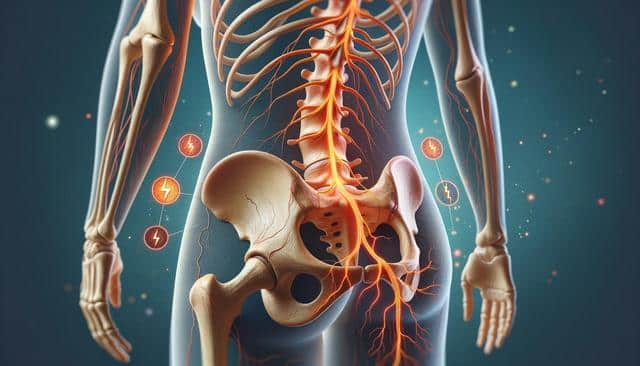Understanding Sciatica Symptoms
Sciatica is a condition that arises when the sciatic nerve, which runs from the lower back down to the legs, becomes compressed or irritated. This can result in a range of symptoms that vary in intensity and duration. Common symptoms include sharp pain that radiates down one leg, tingling or numbness in the affected area, and muscle weakness. The symptoms can be exacerbated by prolonged sitting, standing, or sudden movements. Recognizing these symptoms early can help in managing the condition effectively and preventing further complications.
Effective Management Strategies
Managing sciatica involves a combination of strategies that focus on alleviating pain and improving mobility. Here are some helpful tips:
- Engage in regular, gentle exercise like walking or swimming to maintain flexibility without straining the back.
- Incorporate stretching exercises to relieve tension in the lower back and legs.
- Use heat and cold therapy to reduce inflammation and soothe discomfort.
- Maintain good posture while sitting and standing to prevent strain on the sciatic nerve.
These strategies, when implemented regularly, can lead to noticeable improvements in symptoms and overall well-being.
Role of Physical Therapy
Physical therapy plays a crucial role in the management of sciatica. A trained therapist can design an individualized program that targets specific weaknesses and promotes healing. This typically includes exercises that strengthen the muscles of the back and core, which can provide better support to the spine and reduce nerve compression. Additionally, a therapist may utilize techniques such as massage and joint mobilization to enhance recovery and reduce pain. Consistent attendance and adherence to a physical therapy program can significantly reduce the frequency and severity of sciatica symptoms.
Medications and Alternative Therapies
While exercise and physical therapy are essential, medications can also provide relief, especially during acute flare-ups. Over-the-counter pain relievers like ibuprofen or acetaminophen are commonly used to reduce pain and inflammation. In some cases, doctors may prescribe muscle relaxants or anti-inflammatory drugs. Beyond medication, alternative therapies such as acupuncture, chiropractic care, and yoga may offer additional benefits. These approaches aim to restore balance to the body and can be part of a comprehensive treatment plan for sciatica.
Preventing Sciatica Flare-Ups
Preventing future flare-ups of sciatica is an essential part of ongoing management. Lifestyle changes can make a significant difference. It is advisable to maintain a healthy weight to reduce pressure on the spine. Engaging in regular physical activity strengthens the muscles that support the back. Additionally, avoiding prolonged periods of inactivity, using ergonomic furniture, and lifting objects correctly can prevent unnecessary strain on the sciatic nerve. By adopting these preventive measures, individuals can minimize the risk of recurring sciatica symptoms and maintain a better quality of life.
Conclusion
Dealing with sciatica can be challenging, but with the right strategies, it is possible to manage symptoms effectively. By understanding the condition, utilizing a combination of exercise, therapy, medications, and lifestyle modifications, individuals can experience significant relief and improve their quality of life. Consistency and commitment to these practices are key to achieving long-term benefits and preventing future episodes of sciatica.
